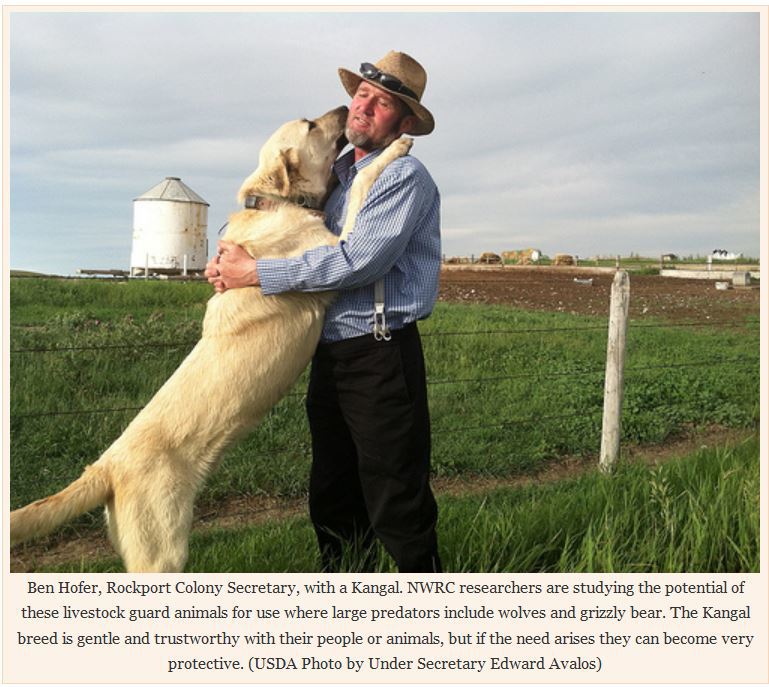USDA Expands Research on Larger Dog Breeds for Use in Livestock Protection
USDA Animal and Plant Health Inspection Service sent this bulletin at 02/26/2014 01:10 PM EST
Having trouble viewing this email? View it as a Web page.![]()
Posted by Gail Keirn, APHIS Legislative and Public Affairs (970-266-6007)
USDA Expands Research on Larger Dog Breeds for Use in Livestock Protection
Taking on an adult grizzly bear or a pack of wolves is a lot to ask of a livestock protection dog, but it’s a task they willingly take to protect their herds from predation. For centuries, livestock protection dogs have helped ranchers protect livestock from coyotes, feral dogs, foxes, and mountain lions. Without them, thousands of sheep, lambs, and calves would be killed or injured each year.
Livestock protection dogs grow up and live with their herd, patrolling the perimeters of grazing areas to ward of potential predators. Now, with the recovery and expansion of populations of grizzly bears and wolves, current breeds of livestock protection dogs— like the Great Pyrenees, Komondors, and Akbash— are losing many of the fights. They are no match for these larger predators.
To help producers in western States cope with the rising number of large carnivores on the landscape, USDA’s Wildlife Services (WS) program and its research arm the National Wildlife Research Center (NWRC) are leading an effort to identify more suitable breeds of livestock protection dogs. In 2013, NWRC researchers began a multi-year study to determine the effectiveness of larger, more assertive European dog breeds at protecting livestock from grizzly bears and wolves in Idaho and Montana. WS Deputy Administrator William Clay recently directed that this project be expanded to Oregon, Washington, and Wyoming.
“Finding suitable dog breeds for use as livestock protection dogs against wolves and bears not only helps us safeguard livestock and the livelihoods of ranchers, but also enhances and encourages coexistence between people and large predators” states Deputy Administrator Clay.
Researchers and their partners are importing young Kangal, Karakachan, and Cão de Gado Transmontano dogs from Europe and placing them with producers to acclimate and bond to sheep. The dogs’ movements and behaviors are monitored using global position system (GPS) collars and direct observations. Care is taken to monitor for negative behaviors in the dogs, such as aggression towards other dogs, livestock, or humans or an inability to bond to livestock. Data is also being gathered on wolf and grizzly bear activities and movements in the study areas. Researchers hope to learn whether the European breeds can protect livestock from wolves and bears while also exhibiting appropriate temperaments for living with livestock in pens and on open lands.
Large carnivores, such as wolves and grizzly bears, were rare in the 1980s and ‘90s when WS first published its research and guidance on the use of livestock protection dogs. For more information on livestock protection dogs, please visit the following:
- Livestock Protection Dogs (web page)
- Livestock Protection Dogs (factsheet)
- Livestock Protection Dogs: Protecting Sheep from Predators (brochure)
- WS National Wildlife Research Center – Predation Research





